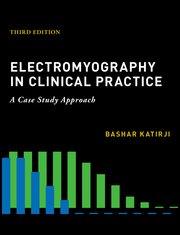Cerebrospinal Fluid in Clinical Neurology
| Auflage | 2015 |
| Seiten | 442 pp., 75 illus. |
| Verlag | Springer |
| ISBN | 9783319012247 |
| Artikel-Nr. | 556331 |
Lieferzeit ca. 5 Werktage
Produktbeschreibung
The cerebrospinal fluid (CSF) is an invaluable diagnostic tool in clinical neurology, not only in the evaluation of inflammatory, degenerative, and malignant diseases of the nervous system, but also in the diagnosis of all forms of cerebral and subarachnoidal bleedings. The CSF can be easily obtained by lumbar puncture and a set of basic analyses can be investigated with relatively simple laboratory methods. With the combination of a few CSF parameters, a wide range of diagnostic entities can be differentiated. However, the interpretation of test results requires a high level of expertise and cannot be achieved by just reporting single analytic values. This book covers essential topics of cerebrospinal fluid analysis and its use in the diagnosis of common neurological diseases. The first part addresses preclinical aspects such as CSF history as well as the anatomical, physiological, and biological background of this valuable fluid. In addition, a detailed discussion of CSF collection and its preanalytical and methodological implications is provided. In addition, the increasing number of disease-specific markers in CSF will be discussed. Finally, CSF analyses are brought into context with clinical syndromes, demonstrating the diagnostic value of CSF in neurological clinical practice. Cerebrospinal Fluid in Clinical Neurology helps understand preanalytical and analytical issues of CSF diagnostics and will be a valuable reference for the interpretation of CSF results during the clinical work-up of neurological patients.
Fachzeitschriften

Bleiben Sie informiert!
Melden Sie sich für den frohberg.de-Newsletter an und nutzen Sie jetzt Ihre Vorteil:- Willkommens-Dankeschön: Beatmungsmaske Rescue Me
- Aktuelle Neuerscheinungen und Empfehlungen
- Exklusive Angebote und Kongress-Highlights







